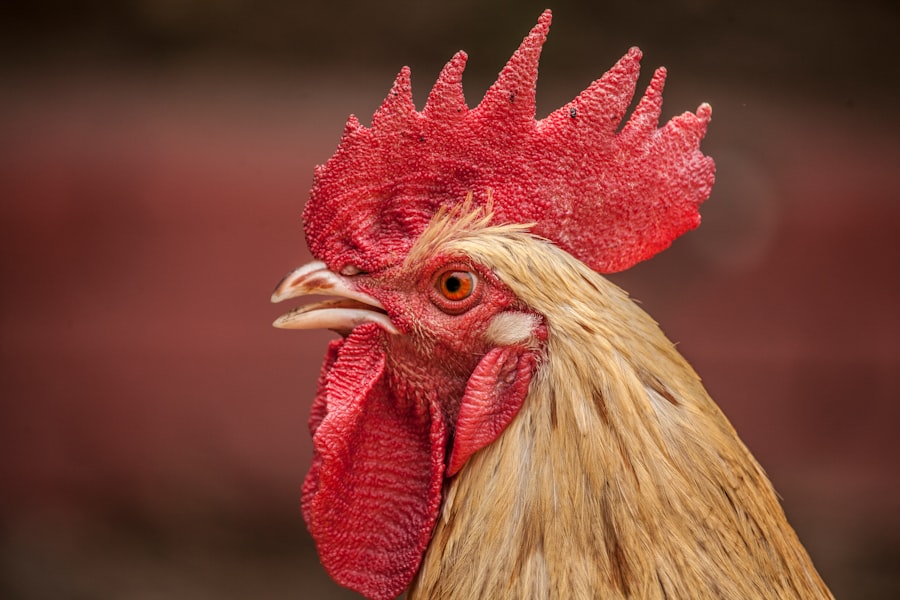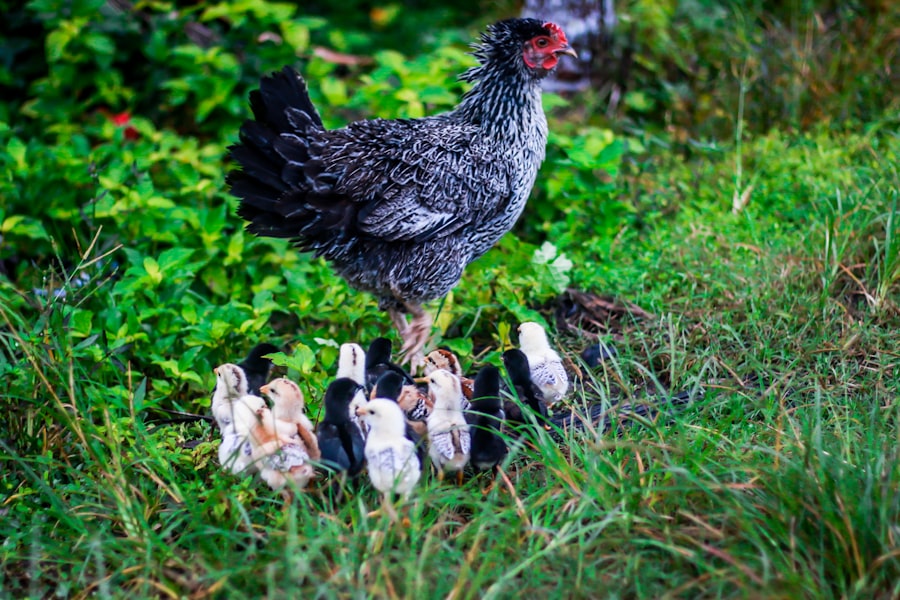Keeping chickens occupied and stimulated is crucial for their overall health and productivity. As naturally inquisitive and active creatures, chickens require mental and physical engagement to maintain their well-being. Providing activities and stimulation helps prevent negative behaviors such as pecking, feather picking, and aggression.
Engaged chickens are also more likely to lay eggs consistently and maintain a healthy weight. This article will discuss various methods to keep chickens busy, including:
1. Creating a chicken-friendly environment
2.
Providing enrichment activities
3. Incorporating foraging opportunities
4. Utilizing toys and treats
5.
Encouraging social interaction
6. Monitoring and rotating activities for optimal engagement
By implementing these strategies, chicken owners can ensure their flock remains active, healthy, and content.
Table of Contents
Key Takeaways
- Keeping chickens busy is important for their physical and mental well-being
- Creating a chicken-friendly environment includes providing space, shelter, and access to natural elements
- Enrichment activities for chickens can include hanging treats, providing perches, and introducing new objects for exploration
- Incorporating foraging opportunities such as scattering food or using puzzle feeders can keep chickens engaged
- Chicken toys and treats like hanging mirrors and edible boredom busters can provide mental stimulation for chickens
- Encouraging social interaction among chickens through group activities and introducing new flock members can promote a healthy social dynamic
- Monitoring and rotating activities for chicken engagement is essential to prevent boredom and ensure continued stimulation
Creating a Chicken-Friendly Environment
Designing the Perfect Coop and Run
A spacious and well-designed coop and run are essential for providing chickens with the space they need to move around and explore. The coop should be clean, well-ventilated, and free from drafts, while the run should be secure and predator-proof.
Providing Natural Light and Comfort
Providing ample natural light and access to fresh air is also important for the overall well-being of the chickens. Incorporating perches, roosts, and nesting boxes will give chickens opportunities to engage in natural behaviors such as roosting and laying eggs. Adding dust baths filled with sand or diatomaceous earth will allow chickens to engage in natural grooming behaviors, keeping them clean and healthy.
Nutrition and Hydration for a Happy Flock
In addition to the physical environment, providing a balanced diet is crucial for keeping chickens healthy and engaged. A diet rich in protein, vitamins, and minerals will ensure that chickens have the energy they need to stay active and busy. Additionally, providing access to fresh water at all times is essential for their overall health and well-being. By creating a chicken-friendly environment that meets their physical and nutritional needs, chickens will be more likely to engage in natural behaviors and stay busy and content.
Providing Enrichment Activities for Chickens

In addition to creating a chicken-friendly environment, providing enrichment activities is essential for keeping chickens busy and engaged. Enrichment activities can include a variety of options such as hanging treats or vegetables from strings for chickens to peck at, providing puzzle feeders that require chickens to work for their food, or introducing novel objects such as mirrors or shiny objects for chickens to investigate. These activities not only keep chickens mentally stimulated but also encourage natural behaviors such as foraging and exploration.
Additionally, providing opportunities for chickens to engage in natural behaviors such as dust bathing, scratching, and perching will keep them busy and content. Another way to provide enrichment for chickens is by introducing novel objects or structures into their environment. This can include adding branches or logs for chickens to perch on, creating a small obstacle course for them to navigate, or introducing new hiding spots or tunnels for them to explore.
These additions not only provide mental stimulation but also encourage physical activity, keeping chickens busy and engaged. Overall, providing enrichment activities that encourage natural behaviors and stimulate the chickens’ curiosity is essential for their overall well-being and happiness.
Incorporating Foraging Opportunities
Incorporating foraging opportunities is another important aspect of keeping chickens busy and engaged. Foraging is a natural behavior for chickens, as they would spend much of their time in the wild scratching and pecking at the ground in search of food. Providing opportunities for chickens to forage not only keeps them physically active but also allows them to engage in natural behaviors that are essential for their well-being.
This can include scattering their feed on the ground rather than placing it in a feeder, allowing them to search for insects or grubs in the soil, or providing access to a designated foraging area filled with straw or leaves. Another way to incorporate foraging opportunities is by introducing a variety of vegetation into their environment. This can include planting grasses, herbs, or other edible plants that chickens can peck at or scratch around in.
Additionally, providing access to a compost pile or garden area can give chickens opportunities to forage for insects or other natural treats. By incorporating foraging opportunities into their environment, chickens will stay busy and engaged while engaging in natural behaviors that are essential for their overall well-being.
Utilizing Chicken Toys and Treats
Utilizing toys and treats is another effective way to keep chickens busy and engaged. There are a variety of toys designed specifically for chickens, such as hanging treat balls, puzzle feeders, or even simple objects like mirrors or shiny objects that can pique their curiosity. These toys not only provide mental stimulation but also encourage physical activity as chickens peck at or interact with them.
Additionally, providing treats such as mealworms, fruits, or vegetables can give chickens something to look forward to and keep them busy as they work to obtain their treats. Another way to utilize toys and treats is by creating DIY options using household items. For example, hanging a cabbage or lettuce from a string can provide hours of entertainment as chickens peck at it to access the tasty treat.
Similarly, creating a simple maze out of cardboard boxes or PVC pipes can provide a fun and engaging activity for chickens to navigate. By utilizing toys and treats in their environment, chickens will stay mentally stimulated and physically active, leading to overall well-being and contentment.

Creating a Harmonious Flock
This can include introducing new flock members gradually to avoid aggression or stress, providing ample space for chickens to move around and interact with each other, and ensuring that there are plenty of roosts or perches for them to share.
Natural Flock Behaviors
Another way to encourage social interaction is by providing opportunities for chickens to engage in natural flock behaviors such as dust bathing or preening each other’s feathers.
Outdoor Exploration
Allowing them access to outdoor areas where they can roam and explore together can provide opportunities for socialization and bonding. By encouraging social interaction among chickens, they will stay busy and engaged while maintaining positive relationships with their flock mates.
Monitoring and Rotating Activities for Chicken Engagement
Finally, monitoring and rotating activities is essential for maintaining optimal engagement among chickens. It’s important to observe how chickens interact with various enrichment activities, toys, treats, and foraging opportunities to determine which ones are most effective in keeping them busy and engaged. Additionally, rotating activities on a regular basis can prevent boredom and ensure that chickens continue to stay mentally stimulated and physically active.
By monitoring their engagement with various activities, it’s possible to identify which ones are most effective in keeping them busy and content. This can include observing their behavior when introduced to new toys or treats, noting which foraging opportunities they prefer, or determining which social interactions they engage in most frequently. By rotating activities based on their preferences and engagement levels, it’s possible to ensure that chickens remain busy and content while maintaining optimal well-being.
In conclusion, keeping chickens busy and engaged is essential for their overall well-being and productivity. By creating a chicken-friendly environment, providing enrichment activities, incorporating foraging opportunities, utilizing toys and treats, encouraging social interaction, and monitoring and rotating activities, it’s possible to ensure that chickens stay mentally stimulated and physically active while maintaining positive relationships with their flock mates. Ultimately, by keeping chickens busy and engaged, they will be happier, healthier, and more productive members of the flock.
If you’re looking for ideas to keep your chickens busy, you might want to consider building an A-frame chicken coop. This type of coop provides plenty of space for your chickens to roam and explore, keeping them entertained and active. For more information on A-frame chicken coops, check out this article on poultrywizard.com.
FAQs
What are some ideas to keep chickens busy?
Some ideas to keep chickens busy include providing them with a spacious and stimulating environment, offering a variety of toys and objects for pecking and scratching, and allowing them to forage for insects and plants.
Why is it important to keep chickens busy?
Keeping chickens busy is important for their physical and mental well-being. It helps prevent boredom, aggression, and feather pecking, and promotes overall health and happiness.
What are some examples of toys and objects for chickens to play with?
Examples of toys and objects for chickens to play with include hanging treats, mirrors, perches, swings, and objects for pecking and scratching such as cabbage or lettuce heads.
How can I create a stimulating environment for my chickens?
You can create a stimulating environment for your chickens by providing them with ample space to roam, natural perches and hiding spots, and opportunities for foraging and exploring.
What are some foraging opportunities for chickens?
Foraging opportunities for chickens include scattering scratch grains or mealworms in the coop or run, providing access to a designated foraging area with loose soil or sand, and allowing them to free-range in a safe and supervised environment.
Meet Walter, the feathered-friend fanatic of Florida! Nestled in the sunshine state, Walter struts through life with his feathered companions, clucking his way to happiness. With a coop that’s fancier than a five-star hotel, he’s the Don Juan of the chicken world. When he’s not teaching his hens to do the cha-cha, you’ll find him in a heated debate with his prized rooster, Sir Clucks-a-Lot. Walter’s poultry passion is no yolk; he’s the sunny-side-up guy you never knew you needed in your flock of friends!








